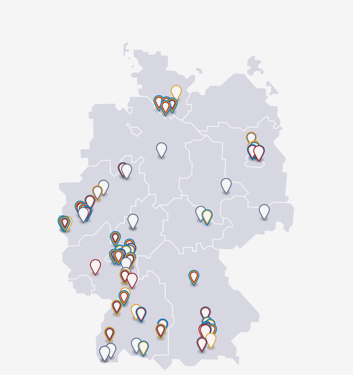Leem & vfa joint recommendations for an efficient EU-HTA
The European HTA (Health Technology Assessment) Regulation entered into force in January 2022. The Regulation is the first output of the EU Pharmaceutical Strategy with the declared objectives to foster patient access to innovative medicines and to support competitiveness and innovative capacities of the European healthcare sector.
 The implementation of the Regulation towards an efficient and workable framework is a shared responsibility of Member States and the European Commission, however with special roles for France and Germany. Both countries play leading roles in the implementation process and thus should ensure that the objectives of the Regulation can be achieved to benefit patients, healthcare systems and industry.
The implementation of the Regulation towards an efficient and workable framework is a shared responsibility of Member States and the European Commission, however with special roles for France and Germany. Both countries play leading roles in the implementation process and thus should ensure that the objectives of the Regulation can be achieved to benefit patients, healthcare systems and industry.
“Les Entreprises du médicament en France” (Leem) and “Verband der forschenden Pharma-Unternehmen in Deutschland” (vfa) therefore call on France, Germany and their HTA institutions to optimally implement the European HTA process considering the four following recommendations.
Ensuring a harmonized clinical assessment
In accordance with the objectives set by the European HTA Regulation, the Joint Clinical Assessment must harmonize the evaluation methods of the different countries. This calls for a common European methodological framework with harmonized data requests and the commitment of all Member States to use the Joint Clinical Assessment report for their national processes. The Leem and the vfa recommend that the constituent elements of the dossier to be submitted by Health Technology Developers should not be the result of a sum of requests from the various national authorities, but of a harmonized choice of requests that are commonly accepted, particularly regarding methodological robustness, efficacy criteria, comparators, and subpopulations of interest.
Ensuring a coordinated, non-duplicative process
European and national procedures of registration and assessment need to be adapted to ensure that European and national processes are optimally coordinated and non-duplicative. Upstream of the Joint Clinical Assessment, the European registration procedure conducted by the EMA (European Medicines Agency) evaluates the efficacy-safety ratio and quality based on the same clinical trials. To promote the alignment between these two assessments, the Leem and the vfa recommend that the Joint Clinical Assessment Process should consider the results of the EMA assessment, without repeating it or calling it into question. The same should apply at the national level, where neither the EMA evaluation nor the Joint Clinical Assessment should be duplicated, and complementary analysis reserved to very exceptional situations.
Ensuring consistency of interpretation
The Joint Clinical Assessment aims to promote equity of access to medicines for European patients. To this end, decisions on reimbursement at national level must be based on a consistent interpretation of the European assessment results to ensure that HTA bodies reach similar conclusions on the impact of new pharmaceuticals throughout Europe. To avoid the risk of "pick and choose" of the different elements of the Joint Clinical Assessment Report by the national authorities, the Leem and the vfa recommend that the Joint Clinical Assessment should express a conclusive discussion on the fundamental points of the evaluation (including patient population; intervention; comparator; health outcomes).
Ensuring sufficient capacities for the Joint Scientific Consultations
Scientific consultations on the required clinical evidence are paramount for ensuring that the evidence provided by Health Technology Developers meet the needs of regulators and HTA bodies. Therefore, the Leem and the vfa welcome the opportunity for Joint Scientific Consultations, in parallel with the scientific advice of the EMA. However, the access to Joint Scientific Consultations must not be limited by insufficient supply. The Leem and the vfa recommend providing sufficient capacities to guarantee that all technology developers that are seeking advice have access to it.
Download this text as a PDF document:
Leem & vfa joint recommendations for an efficient EU-HTA
About
Leem is the French industry association which represents drug companies operating in France. Leem has over 260 member companies representing a total workforce of 98.780 employees (more than 3% of industrial employment in France) and a revenue of € 62.1 billion (of which half are exports). Leem is the only pharmaceutical employers' association in France and, as such, engages in social policy work on behalf of the sector, negotiating, among other things, the collective agreement or minimum wage agreements with social partners.
The Association of Research-based Pharmaceutical Companies (vfa) is the trade association of the innovative pharmaceutical industry in Germany. It represents the interests of 48 world's leading manufacturers and more than 100 subsidiaries and affiliated companies in the health, research, and economic policy. The members of the vfa up about two-thirds of the German pharmaceutical market and employ approximately 94,000 employees in Germany. More than 20,000 of whom work in research and development.



